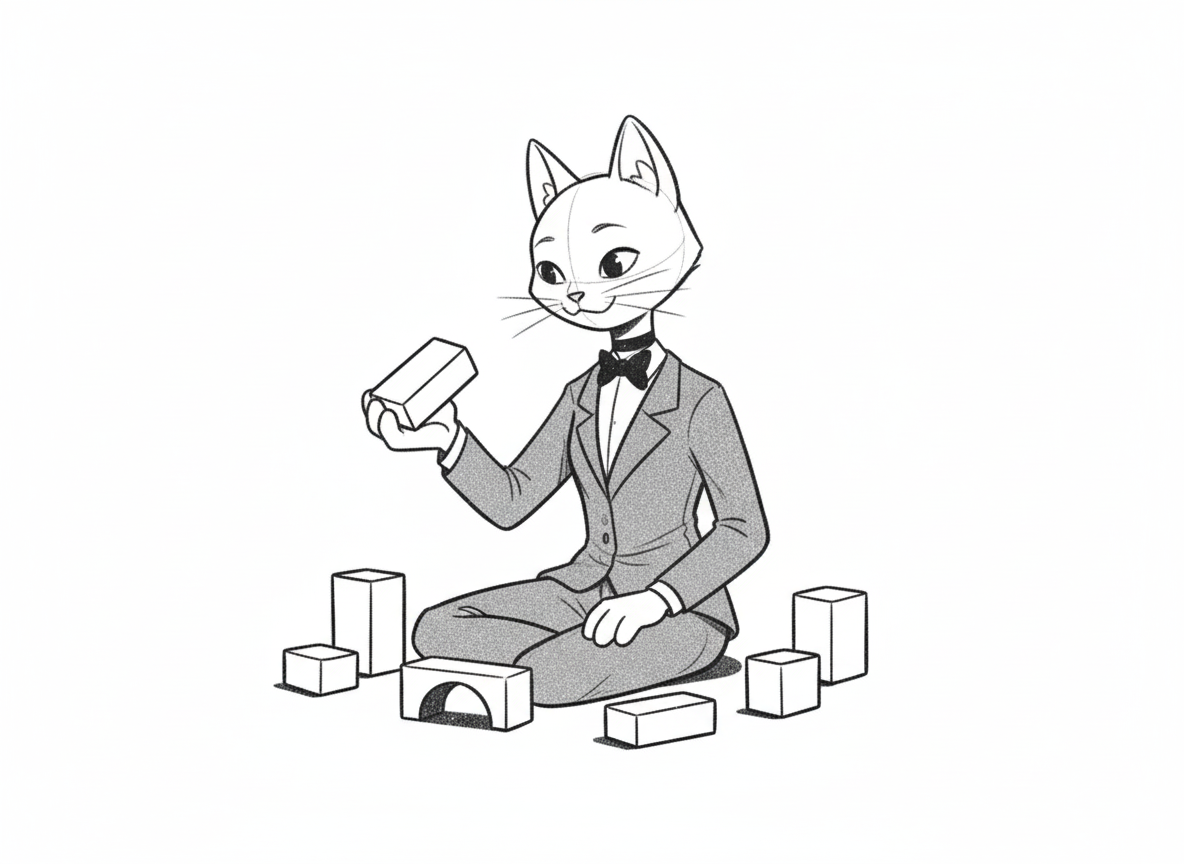
When I first encountered blockchain, I didn't see code or finance. I saw form. Not form as in shape, but as in structure—a set of constraints and affordances that could be shaped into something meaningful.
As a designer, I've learned to feel the grain of materials: how paper folds, how wood responds to humidity, how light bends around curves. Blockchain, too, has a grain. It's not tactile, but it's there—in its logic, its transparency, its resistance to change.
And like any material, once you understand how it behaves, you can begin to design with it, not just on top of it.
1. Immutability Has Weight
Working with blockchain feels like working with stone. Once something is etched, it stays. It doesn't forget. Every action, every transaction becomes a block in a chain that cannot be undone. This isn't just about permanence—it's about responsibility.
When I think of blockchain as a design material, this immutability becomes a kind of weight. It slows you down. It makes you consider the consequences of each input. You're not just prototyping anymore; you're making a pact.
It's a material that demands care.
2. Trust Is Designed Differently
I've always been fascinated by how we design for trust—whether it's the reassuring click of a closing latch, or the consistency of a visual system. Blockchain challenges this. It doesn't rely on central authority or branding. Instead, it distributes trust, embeds it in protocol, exposes the mechanics.
Designing in this space means moving from interface to infrastructure. You're not just making something look trustworthy—you're showing how it works. You let the user see the gears turning. Transparency isn't just ethical here; it's functional.
It's a strange kind of beauty: a system that's honest by design.
3. Time Isn't Linear Anymore
In most materials, time is something you battle—degradation, fading, wear. With blockchain, time becomes something you design. It moves forward in blocks, not seconds. You can set things to unlock in the future, respond to cumulative events, or remain dormant unless triggered by consensus.
This fascinated me. The idea that time could be programmed like clay shaped by gesture. You're no longer just designing interactions—you're designing temporal behaviors.
It opens up a poetic space. A contract that ripens. A message that waits. A memory that only reveals itself when it's needed.
4. Decentralization is a Kind of Texture
Most systems want to be smooth—centralized, controlled, easy to navigate. Blockchain doesn't work that way. It's messy, distributed, layered with redundancies. But in that mess, there's a kind of texture I've come to appreciate.
To design for decentralization is to let go of control. You're setting up conditions, protocols, and then stepping back to let a system evolve. It's like planting seeds instead of drawing blueprints. You don't get to predict everything—but that's part of the power.
This turns users into participants, contributors, even co-owners. It's design as choreography, not command.
5. Material Honesty Still Applies
I believe in designing with honesty. You don't ask bamboo to behave like steel. You don't force clay to keep its corners. Blockchain, too, demands to be treated on its own terms.
It's not fast. It's not lightweight. It doesn't do well with gray areas or reversals. But it is secure. It is public. It is communal.
The temptation is to use blockchain where it's not needed—just because it's novel. But to work with it meaningfully is to ask: what is this material good for? What can only be done in this way? What becomes possible when permanence, transparency, and collective verification are your base layer?
Toward a Poetics of Infrastructure
Reading Kenya Hara taught me that materials aren't just things we use—they are things we see through. They shape not just what we make, but how we think. Blockchain, for me, is one of those materials.
It's not just a tool for finance or control. It's a way to structure memory, participation, and meaning.
And maybe, just maybe, it's a new kind of poetic infrastructure—one we're only beginning to understand.